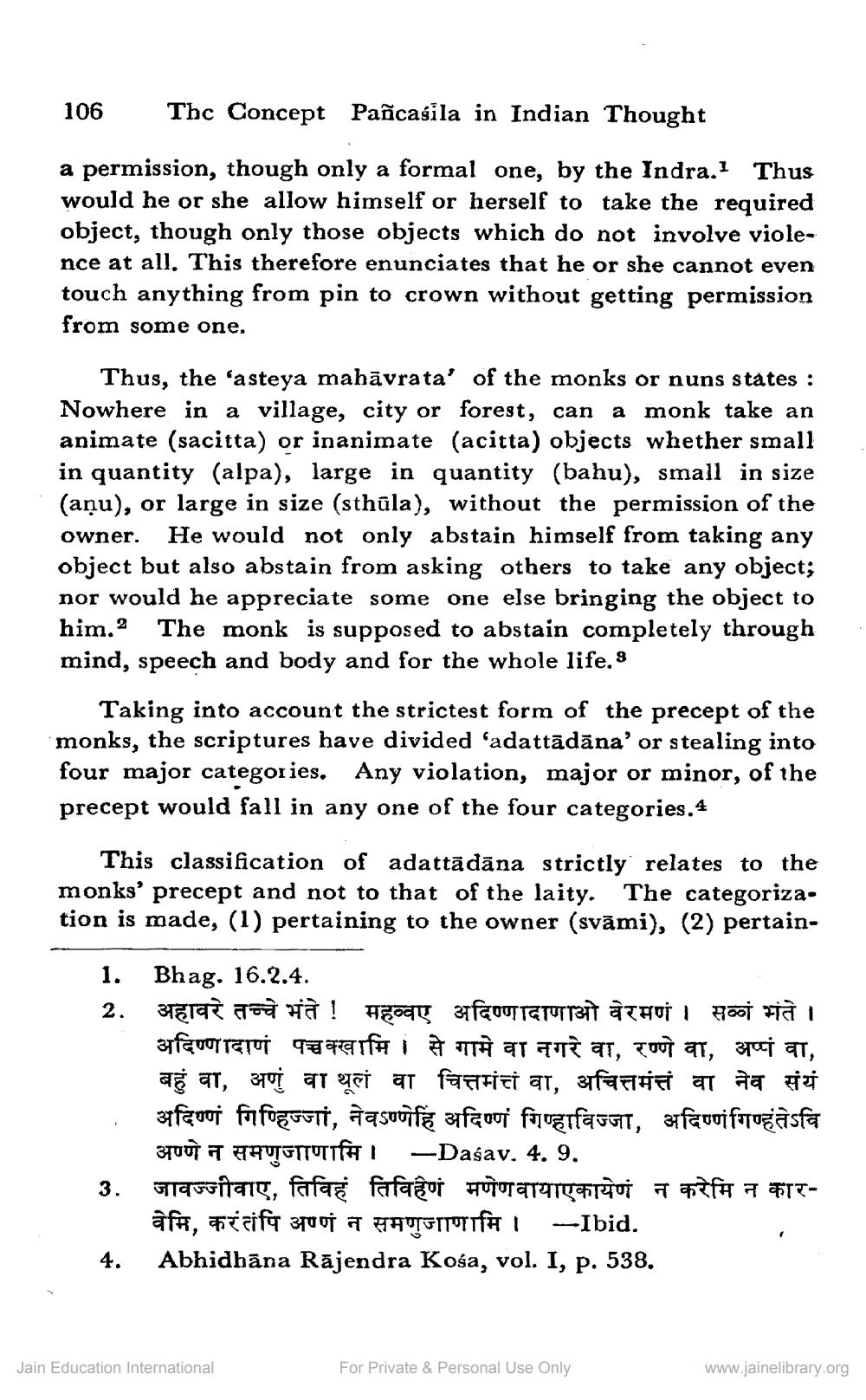________________
The Concept Pancasila in Indian Thought
a permission, though only a formal one, by the Indra.1 Thus would he or she allow himself or herself to take the required object, though only those objects which do not involve violence at all. This therefore enunciates that he or she cannot even touch anything from pin to crown without getting permission from some one.
106
Thus, the 'asteya mahāvrata' of the monks or nuns states: Nowhere in a village, city or forest, can a monk take an animate (sacitta) or inanimate (acitta) objects whether small in quantity (alpa), large in quantity (bahu), small in size (aņu), or large in size (sthūla), without the permission of the owner. He would not only abstain himself from taking any object but also abstain from asking others to take any object; nor would he appreciate some one else bringing the object to him.2 The monk is supposed to abstain completely through mind, speech and body and for the whole life."
Taking into account the strictest form of the precept of the monks, the scriptures have divided 'adattādāna' or stealing into four major categories. Any violation, major or minor, of the precept would fall in any one of the four categories.4
This classification of adattādāna strictly relates to the monks' precept and not to that of the laity. The categorization is made, (1) pertaining to the owner (svāmi), (2) pertain
1.
2.
3.
4.
Bhag. 16.2.4.
अप्पं वा,
अहावरे तच्चे भंते ! महव्वए अदिण्णादाणाओ वेरमणं । सकळां भंते । अदिण्णादाणं पञ्च क्खामि । से गामे वा नगरे वा, रण्णे वा, बहुं वा अणुं वा थूलं वा चित्तमंत्तं वा, अचित्तमंत्तं वा नेव संयं for fifogo, asooìfg af2001 ffan, afifogásfa अण्णे न समणुजाणामि । -Dasav. 4. 9. जावज्जीवाए, तिविहं तिविहेणं मणेणवायाएकायेणं न करेमि न कारवेमि, करंतंपि अण्णं न समणुजाणामि ।
-Ibid.
Abhidhana Rajendra Kosa, vol. I, p. 538.
Jain Education International
For Private & Personal Use Only
www.jainelibrary.org




